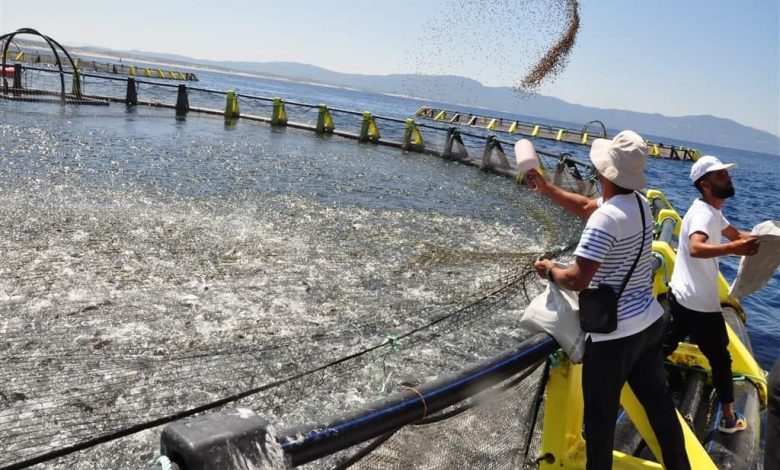The Pilot Fish Farm Project in Tlemcen Aims to Reduce Imports
As part of a strategic revival of the fisheries sector, the Wilaya of Algiers is making significant progress. Thanks to the integration of locally built vessels, the development of aquaculture — particularly with the first experiences in bluefin tuna farming — and a strong commitment to boosting national production, the fishing industry is beginning to show positive signs. Kadour Attef, Director of Fisheries and Fishery Products for Algiers, outlines the concrete advances, the challenges still to overcome, and the short- and medium-term prospects, in a strategy that blends economic sovereignty, industrial innovation, and maritime ambition.
39 Vessels Designed for Tuna Fishing
According to Attef, “The official entry into service of the first two 42-meter vessels built entirely by Algerian engineers is a breakthrough for the sector and for our national fishing fleet.” These are, he says, “the first units of this size, one of which is specifically designed for tuna fishing. Made from fiberglass and resin, these vessels are a significant advancement and a source of pride for the national shipbuilding industry.”
With these two additions, Algeria now has 39 vessels designed for tuna fishing, three of which were built locally. “In 2023, Algeria’s share of the international bluefin tuna quota was 2,024 tonnes. For this year, an increase of 24 tonnes has brought the national quota to 2,047 tonnes,” he noted.
One of the newly launched vessels, Z’malet El Emir Abdelkader — the country’s largest professional fishing boat of the tuna seiner type and fully Algerian-built — will support the first aquaculture farm dedicated to bluefin tuna farming in the Wilaya of Tlemcen. The goal: to capture live tuna, raise them locally, and sell them live, in compliance with international standards.
The Pilot Aquaculture Farm Project: “A Promising Start”
“Until now, Algeria used to export its tuna catches to foreign fish farms, particularly in Tunisia and Turkey,” Attef noted. “Although the Tlemcen farm alone is not sufficient, this pilot project marks a promising start,” he said, adding that Algeria aims to establish new farming facilities in the Algiers region.
The Directorate of Fisheries and Fishery Products of the Wilaya is now calling on all interested investors to submit their aquaculture project proposals. “They will find all the necessary facilities and conditions to bring their projects to life,” the official assured.
“The Wilaya currently has two aquaculture farms, each of which will expand to 24 floating cages by the end of 2026, for a total of 48 cages,” he explained. According to the Directorate’s projections, aquaculture production is expected to exceed traditional fishing yields by December 2027 if the current pace of development continues.
The Need to Shift Toward Deep-Sea Fishing
“The number of aquaculture farms is also expected to grow, as numerous investment requests have already been submitted,” Attef said, emphasizing that “the goal is to develop the maritime zones in the east and west of Algiers.” This dynamic, he believes, “should reduce the country’s dependence on imports and optimize the use of local marine resources.”
As part of efforts to strengthen the sector, the share allocated to Algiers within the national bluefin tuna quota stands at approximately 193 tonnes, which the Wilaya plans to fully utilize. On the industrial side, Attef explained, “this strategic direction aims to sustainably structure the maritime sector, as our primary ambition is to achieve self-sufficiency in shipbuilding and to restore the sector’s former prestige.”
He added, “There’s a need to support shipbuilders to revive activity, particularly in deep-sea fishing.” It’s worth noting, he said, that “when there is demand, industry follows. Structuring the national market would relaunch shipyards and direct national investment toward this field. Algeria has a skilled workforce capable of meeting this ambition.” The sector, he concluded, has also benefited from a recent measure that “allows professionals to import vessels over 24 meters in length that are less than five years old, in order to meet the growing market demand.”
Source: horizons



